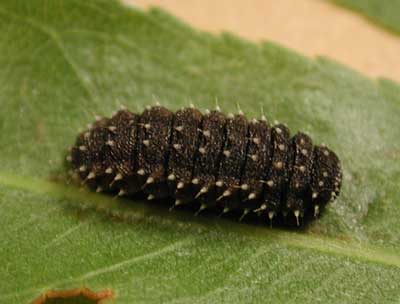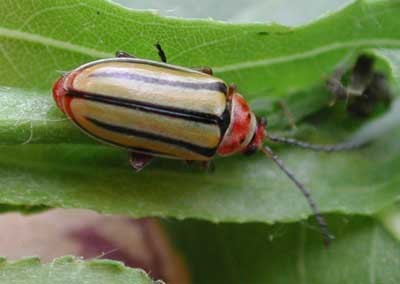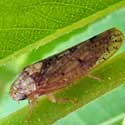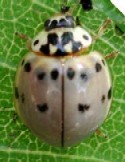Goodding's Willow
Salix gooddingii
Observed at Bumble Bee, Yavapai Co., Arizona on 8 June 2008.
An extensive community of insects, spiders, birds and reptiles live upon Goodding's Willow. Primary consumers feed upon the leaves, bark and roots. Others prey upon the insects and/or use the trees for nesting and shelter.
Examining leaves of Goodding's Willow in spring (April) might reveal these curious larvae that feed in small groups upon the leaves. When they are finished growing they will leave the plant and tunnel into the sand, later to emerge as Striped Willow Flea Beetles (Disonycha alternata). By June the adults can sometimes be numerous and feed actively on fresh foliage of the willow trees. Their acitivity is often concentrated on small, young trees, or those that are rapidly regrowing after a scouring flood.
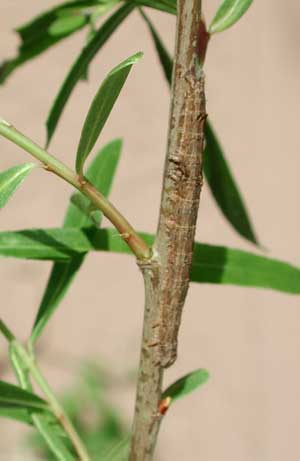
If you check carefully along the stems and you have really sharp eyes you might find a caterpillar to Jessica's Underwing -- Catocala jessica.
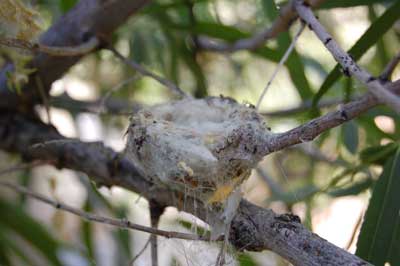
This Black-chinned Hummingbird's nest is suspended on a low branch of a Goodding's Willow. Built by the female, she used a lot of the fluffy, insulating willow-seeds in the construction. Also bits of lichens for concealment. And finally some tough spider's silk to secure the nest. She will dine on many willow-feeding insects among others and feed them to the hatchlings. Other insect food will be emerging aquatic insects which in part were detritivores feeding on the fallen willow leaves from previous seasons.
The caterpillars of the Mourning Cloak (Nymphalis antiopa) on the other hand are easy to find. The are spiny-looking and feed in groups in the open. Most insectivorous birds find them difficult to eat and so leave them alone.
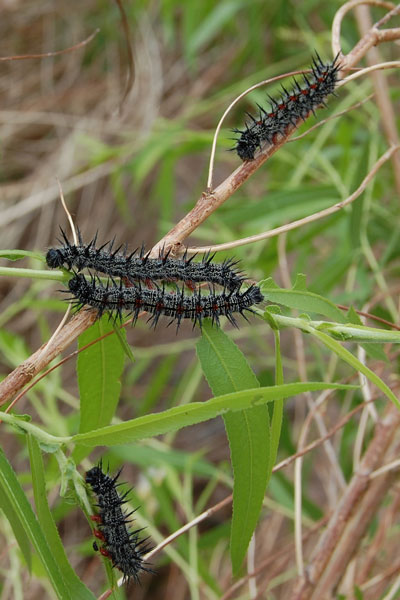
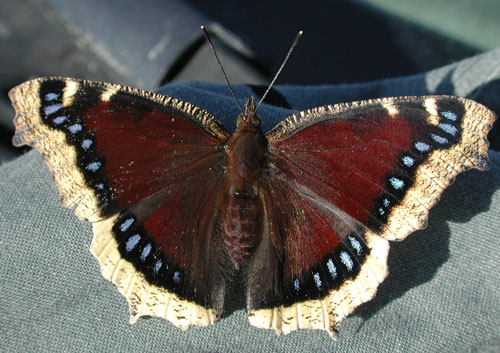
The Mourning Cloak is capable of long distance migrations so that individuals emerging in the Sonoran Desert spring time may well head north to find fresh spring foliage of willows upon which to lay their eggs.
Sponsored Links:
More Information:
- Page 1 on Sonoran Desert Naturalist
- Striped Willow Flea Beetle
- Google Scholar Literature Search -- Disonycha on Willows.
